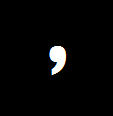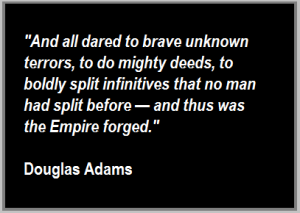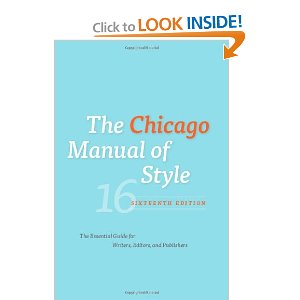 Nothing gets certain people jacked up more than misplaced commas. Why this rabid hysteria? Personally, I have no energy to waste, so I’m selective about my frenzies.
Nothing gets certain people jacked up more than misplaced commas. Why this rabid hysteria? Personally, I have no energy to waste, so I’m selective about my frenzies.
But commacentric grammarians do raise a few salient points. Commas and the rules for their use exist for a reason, and if we want the reading public to understand our work, we need to follow them.
I am a decent structural editor, but I don’t claim to have any special knowledge about commas.
However, I do know a couple of things:
- Never insert commas “where you take a breath” because everyone breathes differently.
- Do not insert commas where you think it should pause, because every reader sees the narrative differently.
Commas are the rules of the road for writing. They are the universally acknowledged pausing and joining symbol. Readers expect to find their pauses between clauses and commas are sometimes the signifiers of those pauses.
One rule I had to unlearn the first time I sent my work to a professional line editor:
- Do not place a comma before ‘because’ unless the information that follows is necessary to the sentence.
What? That’s not what I was taught in school!
The Chicago Manual Online gives this example (and I quote):
He didn’t run, because he was afraid.
He didn’t run because he was afraid.
 In the first sentence, “because he was afraid” isn’t necessary. The main thing is that he didn’t run, and the reason is incidental. The second sentence, which omits the comma, is unclear. It might mean that he ran, but fear was not the reason he did so.
In the first sentence, “because he was afraid” isn’t necessary. The main thing is that he didn’t run, and the reason is incidental. The second sentence, which omits the comma, is unclear. It might mean that he ran, but fear was not the reason he did so.
Mignon Fogarty, the Grammar Girl, explains this well. “You don’t automatically put a comma before the word because, but sometimes you need a comma there to make sure your meaning is clear.”
We do use commas to set off introductory clauses:
- In the first sentence, “because he was afraid” isn’t necessary.
I italicized the introductory clause in the above sentence to show that it is not a stand-alone sentence. This clause introduces the clause that follows it, and its meaning is dependent on that following clause.
Another thing I had to unlearn:
- Do not automatically place a comma before the conjunction ‘and.’
Compound sentences combine two separate ideas (clauses) into one compact package. A comma should be placed before a conjunction only if it is at the beginning of an independent clause. So use the comma before the conjunction (and, but, or) if the clauses are actually standalone sentences. If one of them is not a standalone sentence, it is a dependent clause, and you do not add the comma.
Take these two sentences: She is a great basketball player. She prefers swimming.
- If we combine them this way we add a comma: She is a great basketball player, but she prefers swimming.
- If we combine them this way, we don’t: She is a great basketball player but prefers swimming.
I hear you saying, “Now wait a minute! Mrs. Downing very clearly taught us to use commas to join clauses, and she was right.”
I’m sorry, but Mrs. Downing probably explained that. It just didn’t stick in your memory.
Two complete ideas can be joined with ‘and.’ Did I just contradict myself?
Sort of.
Think of it like a list: if there are only two things (or ideas) in a list, they do not need to be separated by a comma. If there are more than two ideas, the comma should be used to separate them, with a comma preceding the word ‘and’ before the final item/idea.
Dogs, cats, rabbits, and birds.
Oh YES, we DO use serial commas to prevent confusion! You’ve all seen the meme:
 On a personal level, I do love cooking, my pets, and my family. (But not in the same pot.) They’re happy that I use serial commas.
On a personal level, I do love cooking, my pets, and my family. (But not in the same pot.) They’re happy that I use serial commas.
One of my favorite personal failings is the notorious comma splice. Apparently it’s bad form to join two independent clauses with a simple comma. This error is called a comma splice.
I have it on good authority that a comma splice will not cause a tear in the space-time continuum. But since this breach of humanity occasionally sends commacentrics into a frothing frenzy, we will use the conjunction and give these poor wretches a break.
From Wikipedia, the fount of all knowledge: “A comma splice is the use of a comma to join two independent clauses. For example: It is nearly half past five, we cannot reach town before dark. Although acceptable in some languages and compulsory in others (e.g., Bulgarian or French), comma splices are usually considered style errors in English.”
 Commas and their proper use can drive you crazy when you are trying to get your work in order. And quite frankly, the rules are a little confusing.
Commas and their proper use can drive you crazy when you are trying to get your work in order. And quite frankly, the rules are a little confusing.
Consistency is critical. UK usage can vary from US usage in some ways. Find a style guide that you can understand and consult it. Once you have a guide you can work with, use those suggestions consistently in all your work.
I use the Chicago Manual of Style for my work because I am a US citizen, and for creative writing, this is the most comprehensive manual and is what publishers and editors use. If you are strapped for cash, you can often buy secondhand copies of this manual through Amazon.
Commas can easily get out of control for me because I have a tendency to hit the comma key whenever I pause in my thinking when I am in the first draft phase. At that point, I am more concerned with just getting the words down than I am form and style.
However, proper form and style must come into play when we get into the later drafts. Using established protocols for punctuation is important if you want your readers to understand what you meant when you wrote that amazing piece of literature.








Hear, hear. Good posts.
LikeLike
@Dave, I learn as I go!
LikeLike
So small yet so powerful, they are things of beauty!
LikeLike
Ah, but Professor, you understand all the many nuances of the comma!
LikeLike
I think commas are one of the most useful punctuation marks. You’ve touched on one of my favorite topics so I hope you won’t mind if I follow up! As you say, commas serve as road signs, telling readers when they’re entering a new part of the sentence. That said, we use many fewer commas now than writers did 100 or more years ago.
This is a great point: “Think of it like a list: if there are only two things (or ideas) in a list, they do not need to be separated by a comma. If there are more than two ideas, the comma should be used to separate them, with a comma preceding the word ‘and’ before the final item/idea.”
So whenever you have just two of anything joined by one of the coordinating conjunctions like “and” or “but,” you don’t put a comma before the conjunction UNLESS the two things are actual independent clauses. Your example, “She is a great basketball player but prefers swimming,” is an example, since it’s a compound predicate and so follows the rule.
Sometimes I see commas after one of the coordinating conjunctions. Generally, not a good choice!
People seem to have the hardest time with using commas to distinguish between essential and non-essential modifiers. You’re right: get that style guide! A great resource for seeing how to use commas to control the rhythm of your prose is Martha Kolln’s Rhetorical Grammar; here’s an older edition that’s reasonably priced: http://www.amazon.com/Rhetorical-Grammar-Grammatical-Choices-Effects/dp/0205283055
Thanks for a useful post!
LikeLike
@Vanderso–Commas really are not my thing. But they are so important if we want our work to be professional. Thus, we need to know how to use them on a rudimentary level. I do my best to hit the high spots and keep it simple!
LikeLike
I believe I am not alone in taking offense to “poor wretches.” Good post (and I promise I didn’t look for comma errors…much.)
LikeLike
I bow to your whip, oh line-editor mine.
LikeLike
I love commas, probably too much 😦
LikeLike
@Deborah–I have a problem with hitting that comma key too often too.
LikeLiked by 1 person
Great post, thank you. Clarity of meaning, in my view, has to be the default, but clarity of meaning in fiction doesn’t always accord with grammatical correctness. Of course, we all know this.
LikeLike
This is the crux of my discussions with Irene (she who must be obeyed). She is usually correct but I always have to do my own research before I will submit to her rule (as if it was my idea all along).
Just kidding Irene. Put down the whip!
LikeLike
Pingback: #Amwriting: The Coordinating Conjunction | Life in the Realm of Fantasy
Pingback: #Amwriting: The Coordinating Conjunction — Life in the Realm of Fantasy | Arrowhead Freelance and Publishing